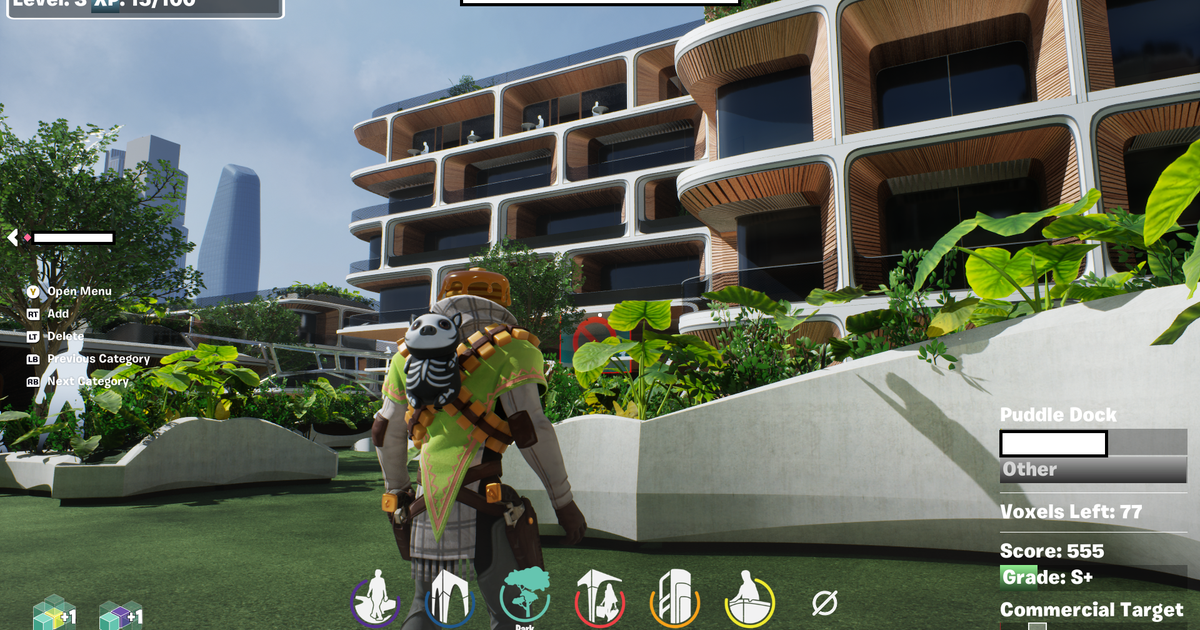Zaha Hadid, the Iraqi-British architect and artist, whose glossy, curvy, arcing buildings have looped and flexed through so many cities around the world, once noted that she had never been asked to design anything of particularly striking significance in London. I wonder what she’d make of the Hadidian, cross-purpose, modular thicket of residential units, parkland, and office space that I helped bring into being over by Blackfriars Bridge the other night. It took about thirty seconds to lay the foundations, and the whole thing was fairly blipped into towering life within a few minutes. By the time I was done, the building soared high over the Thames, more a parody of the Hadid style than the real thing, I suspect, and for that I am entirely to blame. All taken care of in the time it took to eat a packet of crisps.
This is London, but it’s also Fortnite. I was building inside an odd and quietly wonderful project called Re:Imagine London, which is a collaboration between Zaha Hadid Architects and Epic Games. I’m always up for this stuff: architecture and video games converging. A few weeks back I was reading Reyner Banham’s wonderful book, Megastructure: Urban Futures of the Recent Past – there are very few architecture books whose titles could not double as album names for mid-’90s big beat outfits – and it had made me think about this exact kind of thing, in fact.
Megastructures! Banham’s talking about huge buildings that solve multiple needs within the community in which they’re built. They have multiple purposes and functions and allow for various ways of being. I finished the book and thought: yes, Archigram and Le Corbusier, the Plug-In City and Shinjuku, but isn’t Fortnite a megastructure too? So many people coming together in one place, but often using the game in strikingly different ways. So what happens when architects and game tools really converge? Was the faux Hadid building on Blackfriars Bridge a sign of things to come?
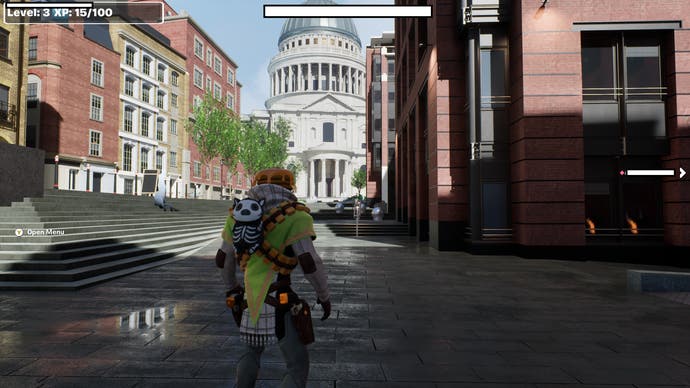

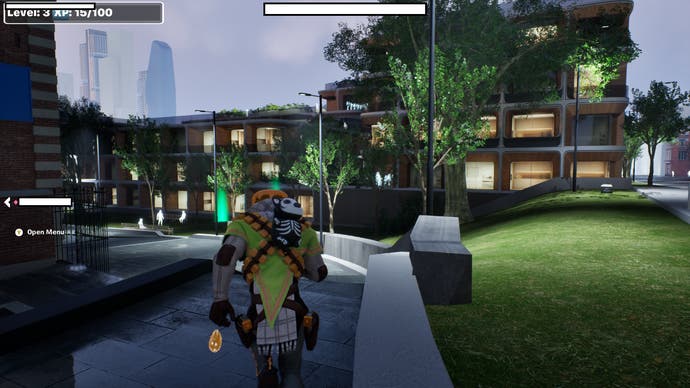
Re:Imagine London started with Zaha Hadid CODE, the architecture firm’s computational design group. “We are the in-house research and design group,” Shajay Bhooshan tells me over Google Meet. Thoughtful and precise with his words, Bhooshan is a co-founder of CODE and an ideal person to talk to about the convergence of architecture and game design tools.
“The mandate of the group is to investigate design technologies and also construction technologies, and how that might be brought into benefit all our projects,” he says. “And ultimately, all of the benefits have to be for the end-user of our buildings, right? Because we do a lot of public buildings; most of our buildings are public. So we look at both construction technologies, for sustainability and those kinds of things, but also design technologies that enhance the user experience or allow us to design better buildings, basically.”
It’s a broad brief, and Bhooshan admits it takes the team into some unexpected territory. And it also means he works in architecture and yet says things like this: “You know, we don’t think of buildings as something that needs to be constructed.”
What?
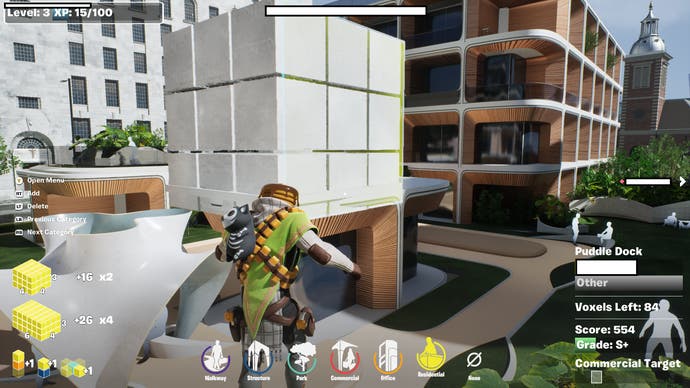
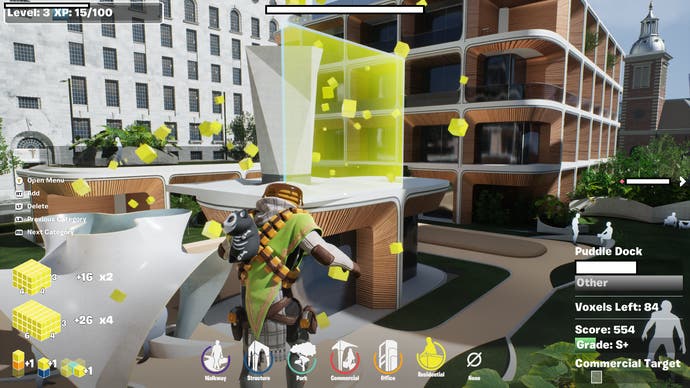
“So construction comes second,” he explains. “We focus on the user experience. That’s why we believe that virtual architecture is just as real as physical. Because once you think about architecture as a host for human activity, particularly large-scale, large numbers of humans together, like stadiums in our urban areas and public spaces? Architecture suddenly becomes one of the few disciplines that is able to cater to large numbers of people and even think about how to design spaces and enhance that experience.” This in turn means that Bhooshan’s team spends a lot of time thinking about novelty. “We investigate a lot of technologies that other architects might not. Or even if it’s the same technology, we look at it differently.”
For people like this, Re:Imagine London starts to feel strangely natural. It’s London, but Fortnite players are invited in and asked to build their own modular buildings, right next to familiar landmarks like St Paul’s and the Tate Modern. You investigate architecture by building it yourself, combining different kinds of buildings – residential, offices, parks, sculpture – and trying to create a pleasing balance.
It’s there, and it’s not there. It’s fixed and it’s also changing. One of the pleasures of Re:Imagine London is watching how the modules you place adapt to the presence of the modules you then place next to them, or on top of them. Walls warp and split. Paths converge. You’re in charge and you’re also running to catch up. And at the end? You have the smooth arched wood and curved glass of the residences, the neat walkways on green astroturf, that resemble the kind of golf courses the Jetsons might kill a few hours on. Classic Zaha Hadid.
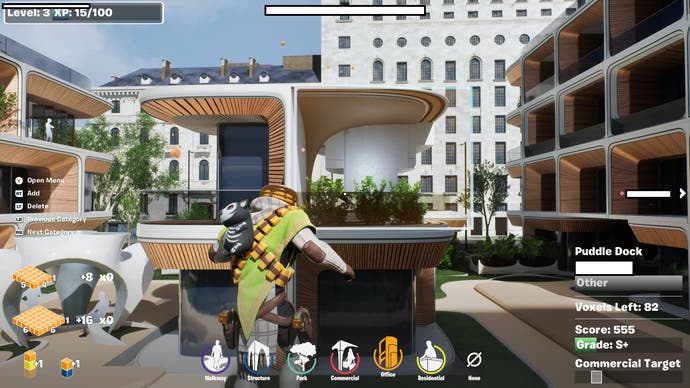
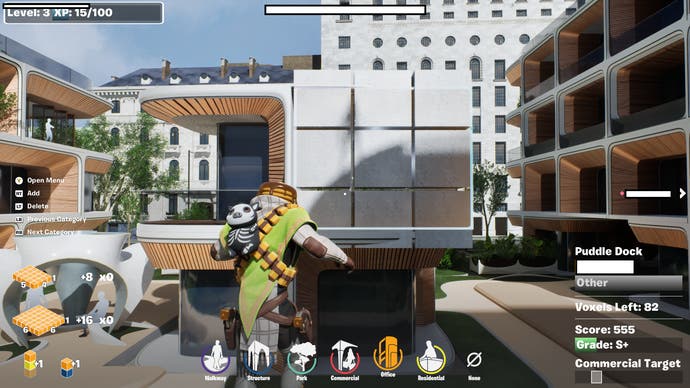
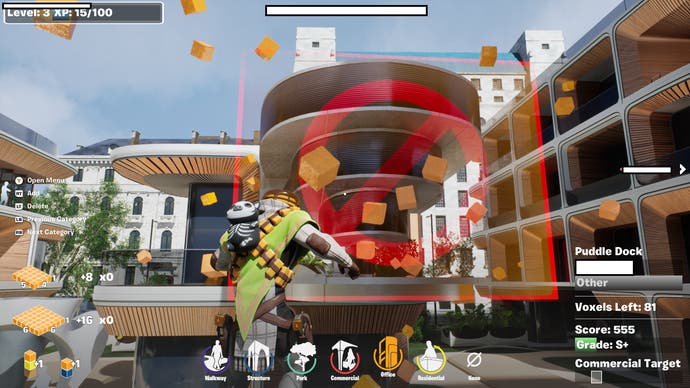
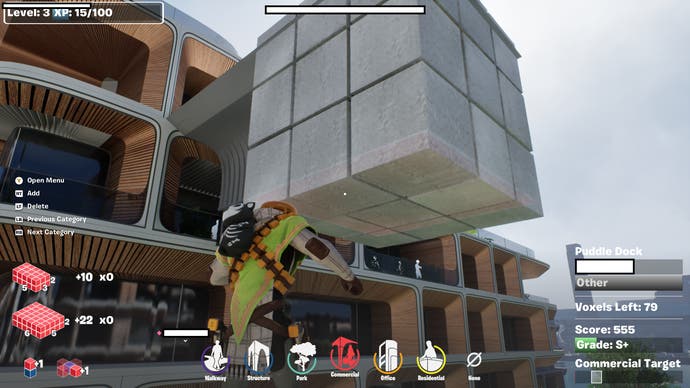
“We’ve always thought that the city is the original Internet, right?” Bhooshan tells me when I ask about how neatly this stuff all seems to fit together. “Where you go to the city, to meet other people, to see other things, to have a productive experience. Basically, whatever you want to do – have a conversation, buy things, consume information, create culture, visit museums – all of these things we now do online. Cities were discovered or invented to do exactly that in a very condensed way.”
This matters to Zaha Hadid Architects because they’re increasingly thinking about the spatial internet – metaverses, hang-outs, places like Fortnite. “There can be a lot of interaction between people [in these spaces],” Bhooshan says. “And so we have thought that the internet, the spatial internet, should be structured like a city and designed with urban principles in mind… You get rid of all the logistical issues of sewage and these kinds of things, and in the virtual world focus on how to get people together.” Deep breath. “And so yes, we do believe the virtual world, the games and the metaverse very much constitutes architecture and constitutes urbanism, right?”
Bhooshan admits he isn’t much of a gamer, but Fortnite initially fascinated him for its urban potential. “When people started having music concerts in Fortnite and these kind of grand feelings of openness? If you investigate that, you think: why is that so appealing? It is because you’re gathering so much information, right? Plus, you can see where other players are…” He trails off briefly. “Those kind of things are very interesting for us: where architecture is an active ingredient in creating the user experience. We believe real-world buildings and real-world cities were like that, and they ought to be like that, and not just like cheap ways to shelter ourselves from the elements.”
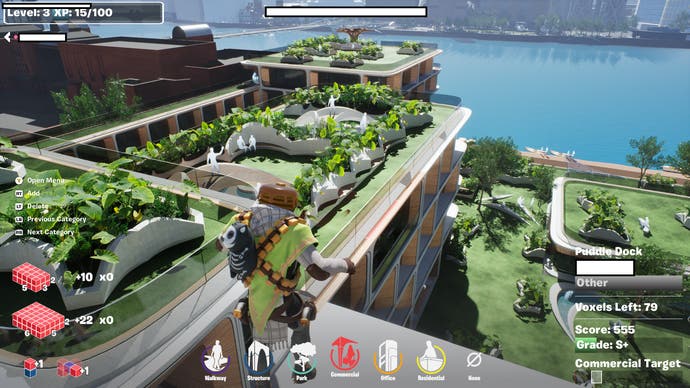
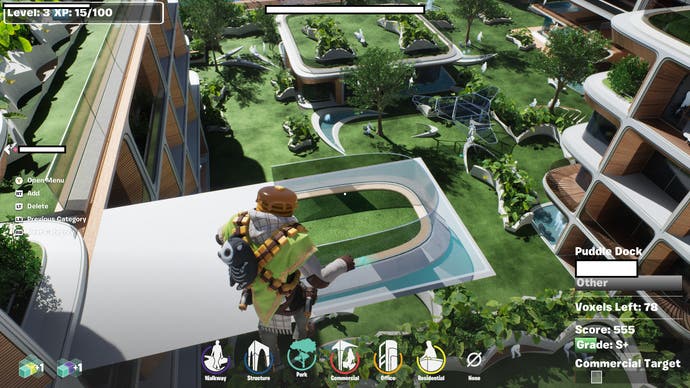

Re:Imagine emerged from all these interests, and a deep belief, flickering to life around 2019 or so, that if the original internet had turned people into graphic designers, the spatial internet might in turn revolutionise architecture. “And of course, the metaverse didn’t yet fully catch on,” Bhooshan says, “but we were very much interested in that. And Epic at the same time were interested in non-gaming use, or adjacent uses of Fortnite. And at the same time I had been researching the use of video games as a medium of participatory architecture, like community engagement, improving civic engagement and civic pride in our cities and in our buildings. Over the 20th century, people cared less and less about buildings and cities and to detrimental effects. So it was a confluence of these three kind of motivations and interests.”
Working with Epic Games, Re:Imagine London evolved as the technical aspects of game design rubbed up against architectural and spatial design. Epic handled the computer programming and worked with an external company on the sound design, while CODE developed the concepts and the 3D architectural space – “and also the kind of motivation to allow people to understand something about the trade-offs of urban design,” Bhooshan adds.
For the last few weeks, the team has been watching players engaging with what they’ve built. “And it is quite surprising,” Bhooshan says. “Because some people are very neat. And, they think of it as a kind of dream castle building. There’s been quite a variety of things that have emerged, and the fact that it is so quick to do and deliver? Within three or four minutes, you can create something that is quite convincing and realistic as architecture and as urban spaces, which is normally not the case in any city-builder game, because in city builder games you don’t actually inhabit the cities, and the buildings are just background, right? It’s often more about economics and so on, but in this case, the focus has been returned to architectural and urban realism, whilst at the same time being super fast.”
It makes me wonder whether he sees Unreal or Fortnite itself as having a future in architectural design. Bhooshan thinks yes, but with caveats. There are technical hurdles, and he admits it’s tougher if you don’t spend a lot of time playing games. But the frictions are being reduced all the time. “We definitely think it’s a great medium to rehearse architecture,” he says. “Because computer-aided software, design software, none of them care for the user experience. They don’t represent users. They only care about the buildings, the doors and the door schedules and so on.” (Don’t google “Door schedules”, by the way, unless you have an afternoon to spare. A serious rabbit hole for the curious.)
“Whereas in reality, architecture and cities are about user experience, and games represent exactly that, because they have the human-eye-view…. It will be a major site of activity for young designers and young users.”
But there’s more than just rehearsals of architecture going on here. “On the other hand, virtual architecture itself is going to be maybe a real thing soon enough,” Bhooshan says. “Right now, there’s lots of experiments, but soon enough, there will be a virtual layer of any city. So that’s one of the things that we thought of: Fortnite could become the virtual layer for London or any other city, and particularly cultural institutes can host their events or even advertise events, have a little launch party in front of the Thames, or in front of the Tate Modern, in front of St Paul’s.”
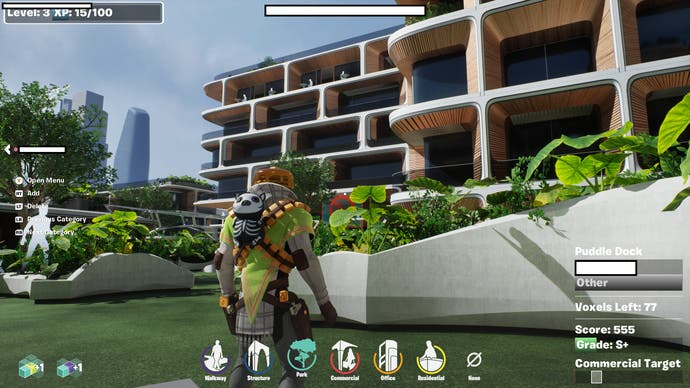
I’m fascinated by this idea of virtual cities that live alongside real cities, layered upon them, threaded into them. I wonder, towards the end of our conversation, whether this will allow for an expanded use of space. Just thinking of something like a London museum: due to spatial concerns, only a tiny part of its catalogue can ever be on display. But in a virtual museum that lives alongside the real thing…?
Bhooshan’s view of this is more nuanced, inevitably. “On the one hand, it does seem that there is infinite space [in virtual architecture]. On the other hand, it’s not really infinite, because you have to design the assets, and it is very dimensionally restricted because, the amount of effort needed to be invested to create the trees, to create the landscape? All of these things take human effort, and that constraint doesn’t go away, like, even if the spatial constraint is a bit diminished.” You can’t fully escape from the door schedule!
But it’s also just not that simple. Maybe cities shouldn’t have infinite space in the first place. “I mean, even in physical cities, they occupy only half a percent or one percent of the world’s available surface area,” Bhooshan laughs. “And so land is actually much more unlimited in that sense.” He nods. “The reason cities are compact is because people want to be next to each other. They want to discover each other quickly, And also the physical resources to build cities, we are restricted there.
“You need a kind of interaction density. Nobody wants actually infinite games. I mean, yes, you need variety, but you do want to discover many people, many things in a small, compact area. So games actually really bring that constraint from the physical world – and highlight the value of that constraint. Because when things are compact, you see other people, discover new things, more things. And so actually it’s the other way around. We hope, and we believe, that people will discover the value of real-world cities being compact.” He smiles: a favourite topic, clearly. “You know, like London. The central part of London is more compact and more enjoyable than, you know, Croydon. Which is not compact at all.” Oof.

